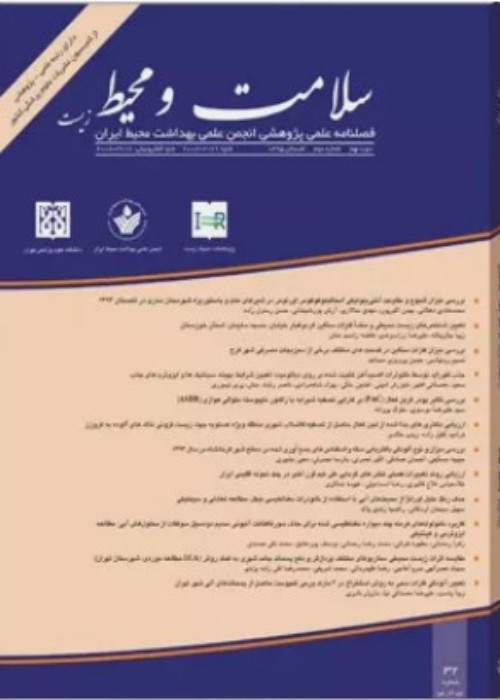Investigation on particle matter concentration and bacterial bioaerosols in indoor air of prisons
Author(s):
Abstract:
Objectives
Many of non-respiratory and respiratory disorders are associated with bioaerosols in indoor and outdoor air. The best conditions for bioaerosols life are high humidity and moderate temperatures, which exist usually in indoor spaces such as the prisons, where density of individual is high. Pathogen spreading centers cause the prisoners health at risk of disease outbreaks through airborne and breathing, sneezing, and coughing. Therefore, the aim of this research work was to measure concentration of particulate matters and also to identify and determine bacteria existing in the prisoners breathing air at high-density areas in one of the prisons and their relationship with each other. Materials and Method
we conducted this research during summer and winter of 2012. We used TSI apparatus for collecting particles (PM2.5 and PM10). Blood agar and EMB agar media were applied to measure bacteria in indoor air (bedchambers and clinical admission wards) of the prison. According to NIOSH 0800 method, High volume pump with 28.3 L/min flow and a Single-stage Anderson Impactor were used for sampling. The time of measuring for each plate was 2.5 min. Finally, the data achieved were analyzed using SPSS after counting and detecting bacterial colonies grown and determining its density (CFU/m³) for two consecutive seasons of summer and winter. The tests analyzed by SPSS were ANOVA, Post hoc, correlation, and Pearson correlation tests. Results
Amounts of particulate matter in bedchambers were exceeded than 24-hour EPA limits, while it was less than the limits in clinical admission wards. Gram-positive and gram-negative bacteria were found in three bedchambers (50% of the bedchambers); however, gram-positive bacteria were cultivated only in three bedchambers. The maximum bacterial contamination was measured at the main Lobby of the prison and bedchamber II and the minimum value was observed in admitted patient and TB patient wards. Results showed that there is no significant relationship between the particulate matters and the bacterial density during neither summer nor winter, but there is a strong and direct relationship between the prisoners population density, ventilation systems, and bacterial density n indoor air of the studied prison. Conclusion
Based on the results, the maximum contamination load and exceeded concentration was observed in public sections and bedchambers. This findings were attributed to the daily entry of new prisoners, high population density in prison, presence of ill prisoners, prisoners with hidden respiratory disease showing no symptoms yet, old building, climatic conditions of the region, low efficiency of ventilation systems, and influx of particulates. To filter and purify prison indoor air, it is crucial to take serious action plans such as reducing criminal population density, sanitary and engineering measures.Keywords:
Language:
Persian
Published:
Iranian Journal of Health and Environment, Volume:6 Issue: 3, 2013
Pages:
295 to 306
magiran.com/p1262620
دانلود و مطالعه متن این مقاله با یکی از روشهای زیر امکان پذیر است:
اشتراک شخصی
با عضویت و پرداخت آنلاین حق اشتراک یکساله به مبلغ 1,390,000ريال میتوانید 70 عنوان مطلب دانلود کنید!
اشتراک سازمانی
به کتابخانه دانشگاه یا محل کار خود پیشنهاد کنید تا اشتراک سازمانی این پایگاه را برای دسترسی نامحدود همه کاربران به متن مطالب تهیه نمایند!
توجه!
- حق عضویت دریافتی صرف حمایت از نشریات عضو و نگهداری، تکمیل و توسعه مگیران میشود.
- پرداخت حق اشتراک و دانلود مقالات اجازه بازنشر آن در سایر رسانههای چاپی و دیجیتال را به کاربر نمیدهد.
In order to view content subscription is required
Personal subscription
Subscribe magiran.com for 70 € euros via PayPal and download 70 articles during a year.
Organization subscription
Please contact us to subscribe your university or library for unlimited access!


